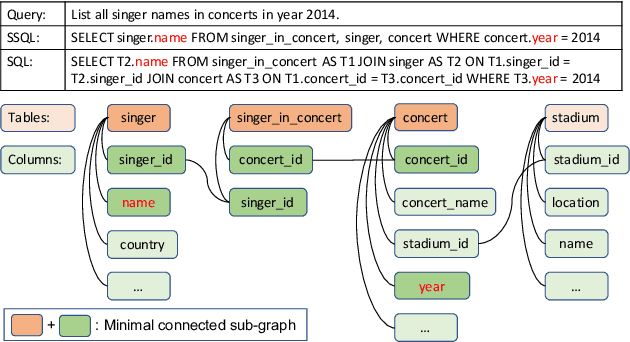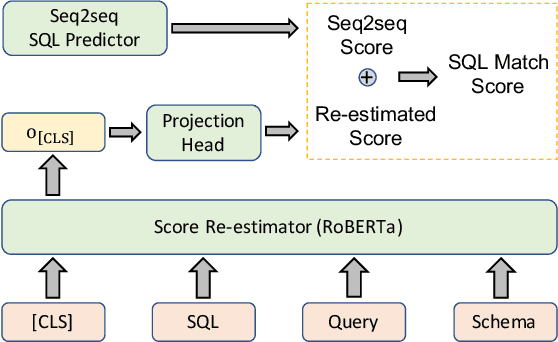Zhenpeng Su
DSMoE: Matrix-Partitioned Experts with Dynamic Routing for Computation-Efficient Dense LLMs
Feb 18, 2025Abstract:As large language models continue to scale, computational costs and resource consumption have emerged as significant challenges. While existing sparsification methods like pruning reduce computational overhead, they risk losing model knowledge through parameter removal. This paper proposes DSMoE (Dynamic Sparse Mixture-of-Experts), a novel approach that achieves sparsification by partitioning pre-trained FFN layers into computational blocks. We implement adaptive expert routing using sigmoid activation and straight-through estimators, enabling tokens to flexibly access different aspects of model knowledge based on input complexity. Additionally, we introduce a sparsity loss term to balance performance and computational efficiency. Extensive experiments on LLaMA models demonstrate that under equivalent computational constraints, DSMoE achieves superior performance compared to existing pruning and MoE approaches across language modeling and downstream tasks, particularly excelling in generation tasks. Analysis reveals that DSMoE learns distinctive layerwise activation patterns, providing new insights for future MoE architecture design.
Finedeep: Mitigating Sparse Activation in Dense LLMs via Multi-Layer Fine-Grained Experts
Feb 18, 2025



Abstract:Large language models have demonstrated exceptional performance across a wide range of tasks. However, dense models usually suffer from sparse activation, where many activation values tend towards zero (i.e., being inactivated). We argue that this could restrict the efficient exploration of model representation space. To mitigate this issue, we propose Finedeep, a deep-layered fine-grained expert architecture for dense models. Our framework partitions the feed-forward neural network layers of traditional dense models into small experts, arranges them across multiple sub-layers. A novel routing mechanism is proposed to determine each expert's contribution. We conduct extensive experiments across various model sizes, demonstrating that our approach significantly outperforms traditional dense architectures in terms of perplexity and benchmark performance while maintaining a comparable number of parameters and floating-point operations. Moreover, we find that Finedeep achieves optimal results when balancing depth and width, specifically by adjusting the number of expert sub-layers and the number of experts per sub-layer. Empirical results confirm that Finedeep effectively alleviates sparse activation and efficiently utilizes representation capacity in dense models.
CartesianMoE: Boosting Knowledge Sharing among Experts via Cartesian Product Routing in Mixture-of-Experts
Oct 21, 2024Abstract:Large language models (LLM) have been attracting much attention from the community recently, due to their remarkable performance in all kinds of downstream tasks. According to the well-known scaling law, scaling up a dense LLM enhances its capabilities, but also significantly increases the computational complexity. Mixture-of-Experts (MoE) models address that by allowing the model size to grow without substantially raising training or inference costs. Yet MoE models face challenges regarding knowledge sharing among experts, making their performance somehow sensitive to routing accuracy. To tackle that, previous works introduced shared experts and combined their outputs with those of the top $K$ routed experts in an ``addition'' manner. In this paper, inspired by collective matrix factorization to learn shared knowledge among data, we propose CartesianMoE, which implements more effective knowledge sharing among experts in more like a ``multiplication'' manner. Extensive experimental results indicate that CartesianMoE outperforms previous MoE models for building LLMs, in terms of both perplexity and downstream task performance. And we also find that CartesianMoE achieves better expert routing robustness.
Task-level Distributionally Robust Optimization for Large Language Model-based Dense Retrieval
Aug 20, 2024Abstract:Large Language Model-based Dense Retrieval (LLM-DR) optimizes over numerous heterogeneous fine-tuning collections from different domains. However, the discussion about its training data distribution is still minimal. Previous studies rely on empirically assigned dataset choices or sampling ratios, which inevitably leads to sub-optimal retrieval performances. In this paper, we propose a new task-level Distributionally Robust Optimization (tDRO) algorithm for LLM-DR fine-tuning, targeted at improving the universal domain generalization ability by end-to-end reweighting the data distribution of each task. The tDRO parameterizes the domain weights and updates them with scaled domain gradients. The optimized weights are then transferred to the LLM-DR fine-tuning to train more robust retrievers. Experiments show optimal improvements in large-scale retrieval benchmarks and reduce up to 30% dataset usage after applying our optimization algorithm with a series of different-sized LLM-DR models.
MaskMoE: Boosting Token-Level Learning via Routing Mask in Mixture-of-Experts
Jul 13, 2024Abstract:Scaling model capacity enhances its capabilities but significantly increases computation. Mixture-of-Experts models (MoEs) address this by allowing model capacity to scale without substantially increasing training or inference costs. Despite their promising results, MoE models encounter several challenges. Primarily, the dispersion of training tokens across multiple experts can lead to underfitting, particularly for infrequent tokens. Additionally, while fixed routing mechanisms can mitigate this issue, they compromise on the diversity of representations. In this paper, we propose MaskMoE, a method designed to enhance token-level learning by employing a routing masking technique within the Mixture-of-Experts model. MaskMoE is capable of maintaining representation diversity while achieving more comprehensive training. Experimental results demonstrate that our method outperforms previous dominant Mixture-of-Experts models in both perplexity (PPL) and downstream tasks.
Scaffold-BPE: Enhancing Byte Pair Encoding with Simple and Effective Scaffold Token Removal
Apr 27, 2024Abstract:Byte Pair Encoding (BPE) serves as a foundation method for text tokenization in the Natural Language Processing (NLP) field. Despite its wide adoption, the original BPE algorithm harbors an inherent flaw: it inadvertently introduces a frequency imbalance for tokens in the text corpus. Since BPE iteratively merges the most frequent token pair in the text corpus while keeping all tokens that have been merged in the vocabulary, it unavoidably holds tokens that primarily represent subwords of complete words and appear infrequently on their own in the text corpus. We term such tokens as Scaffold Tokens. Due to their infrequent appearance in the text corpus, Scaffold Tokens pose a learning imbalance issue for language models. To address that issue, we propose Scaffold-BPE, which incorporates a dynamic scaffold token removal mechanism by parameter-free, computation-light, and easy-to-implement modifications to the original BPE. This novel approach ensures the exclusion of low-frequency Scaffold Tokens from the token representations for the given texts, thereby mitigating the issue of frequency imbalance and facilitating model training. On extensive experiments across language modeling tasks and machine translation tasks, Scaffold-BPE consistently outperforms the original BPE, well demonstrating its effectiveness and superiority.
InfoEntropy Loss to Mitigate Bias of Learning Difficulties for Generative Language Models
Nov 01, 2023Abstract:Generative language models are usually pretrained on large text corpus via predicting the next token (i.e., sub-word/word/phrase) given the previous ones. Recent works have demonstrated the impressive performance of large generative language models on downstream tasks. However, existing generative language models generally neglect an inherent challenge in text corpus during training, i.e., the imbalance between frequent tokens and infrequent ones. It can lead a language model to be dominated by common and easy-to-learn tokens, thereby overlooking the infrequent and difficult-to-learn ones. To alleviate that, we propose an Information Entropy Loss (InfoEntropy Loss) function. During training, it can dynamically assess the learning difficulty of a to-be-learned token, according to the information entropy of the corresponding predicted probability distribution over the vocabulary. Then it scales the training loss adaptively, trying to lead the model to focus more on the difficult-to-learn tokens. On the Pile dataset, we train generative language models at different scales of 436M, 1.1B, and 6.7B parameters. Experiments reveal that models incorporating the proposed InfoEntropy Loss can gain consistent performance improvement on downstream benchmarks.
HC3 Plus: A Semantic-Invariant Human ChatGPT Comparison Corpus
Sep 06, 2023Abstract:ChatGPT has gained significant interest due to its impressive performance, but people are increasingly concerned about its potential risks, particularly around the detection of AI-generated content (AIGC), which is often difficult for untrained humans to identify. Current datasets utilized for detecting ChatGPT-generated text primarily center around question-answering, yet they tend to disregard tasks that possess semantic-invariant properties, such as summarization, translation, and paraphrasing. Our primary studies demonstrate that detecting model-generated text on semantic-invariant tasks is more difficult. To fill this gap, we introduce a more extensive and comprehensive dataset that considers more types of tasks than previous work, including semantic-invariant tasks. In addition, the model after a large number of task instruction fine-tuning shows a strong powerful performance. Owing to its previous success, we further instruct fine-tuning Tk-instruct and built a more powerful detection system. Experimental results show that our proposed detector outperforms the previous state-of-the-art RoBERTa-based detector.
T5-SR: A Unified Seq-to-Seq Decoding Strategy for Semantic Parsing
Jun 14, 2023



Abstract:Translating natural language queries into SQLs in a seq2seq manner has attracted much attention recently. However, compared with abstract-syntactic-tree-based SQL generation, seq2seq semantic parsers face much more challenges, including poor quality on schematical information prediction and poor semantic coherence between natural language queries and SQLs. This paper analyses the above difficulties and proposes a seq2seq-oriented decoding strategy called SR, which includes a new intermediate representation SSQL and a reranking method with score re-estimator to solve the above obstacles respectively. Experimental results demonstrate the effectiveness of our proposed techniques and T5-SR-3b achieves new state-of-the-art results on the Spider dataset.
ConTextual Masked Auto-Encoder for Retrieval-based Dialogue Systems
Jun 14, 2023Abstract:Dialogue response selection aims to select an appropriate response from several candidates based on a given user and system utterance history. Recent studies have been improving the accuracy of dialogue response selection through post-training, mostly relying on naive masked language modeling methods. However, the recently developed generative methods have shown promising text representation capabilities in IR community, which could potentially lead to better dialogue semantics modeling. Thus, in this paper, we propose Dial-MAE (Dialogue Contextual Masking Auto-encoder), a straightforward yet effective post-training technique tailored for dialogue response selection. Dial-MAE uses an asymmetric encoder-decoder architecture that learns to better compress the semantics of the dialogue into dialogue-dense vectors. The process of Dial-MAE involves a deep encoder creating a dialogue embedding with the masked dialogue context, followed by a shallow decoder that uses this embedding along with the highly masked response to restore the original response. Our experiments have demonstrated that Dial-MAE is highly effective, achieving state-of-the-art performance on two commonly evaluated benchmarks.
 Add to Chrome
Add to Chrome Add to Firefox
Add to Firefox Add to Edge
Add to Edge